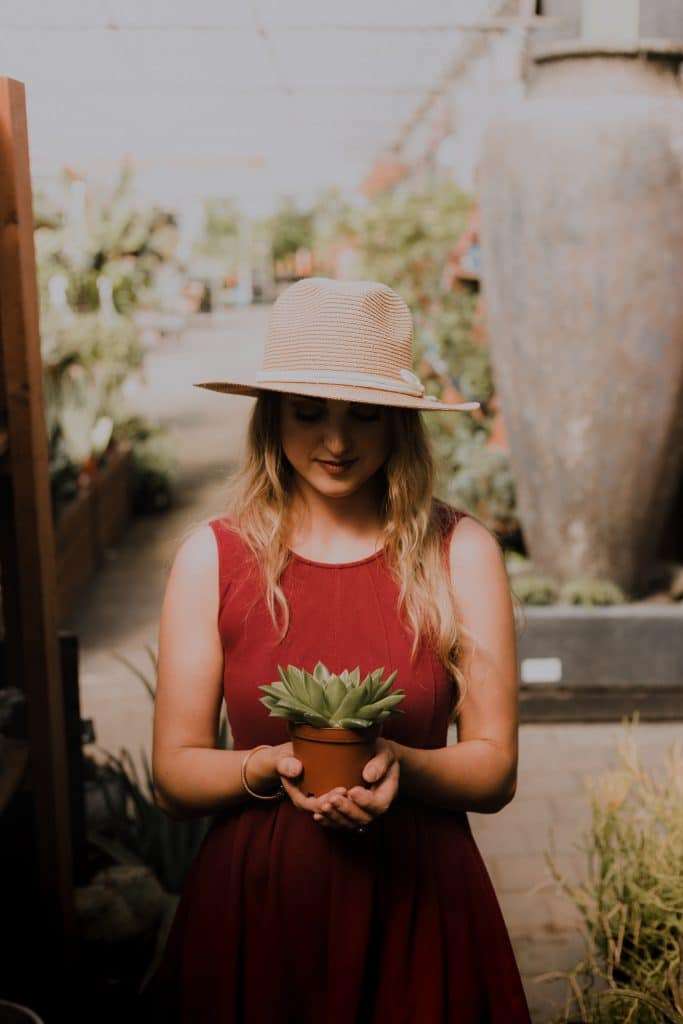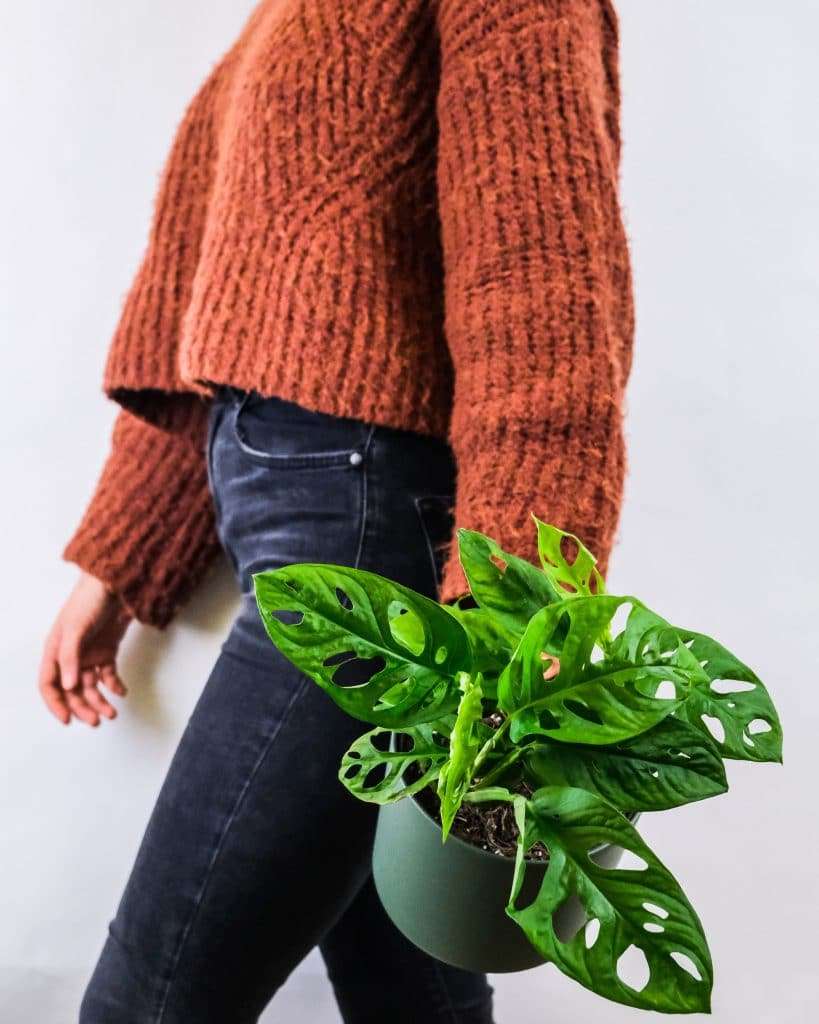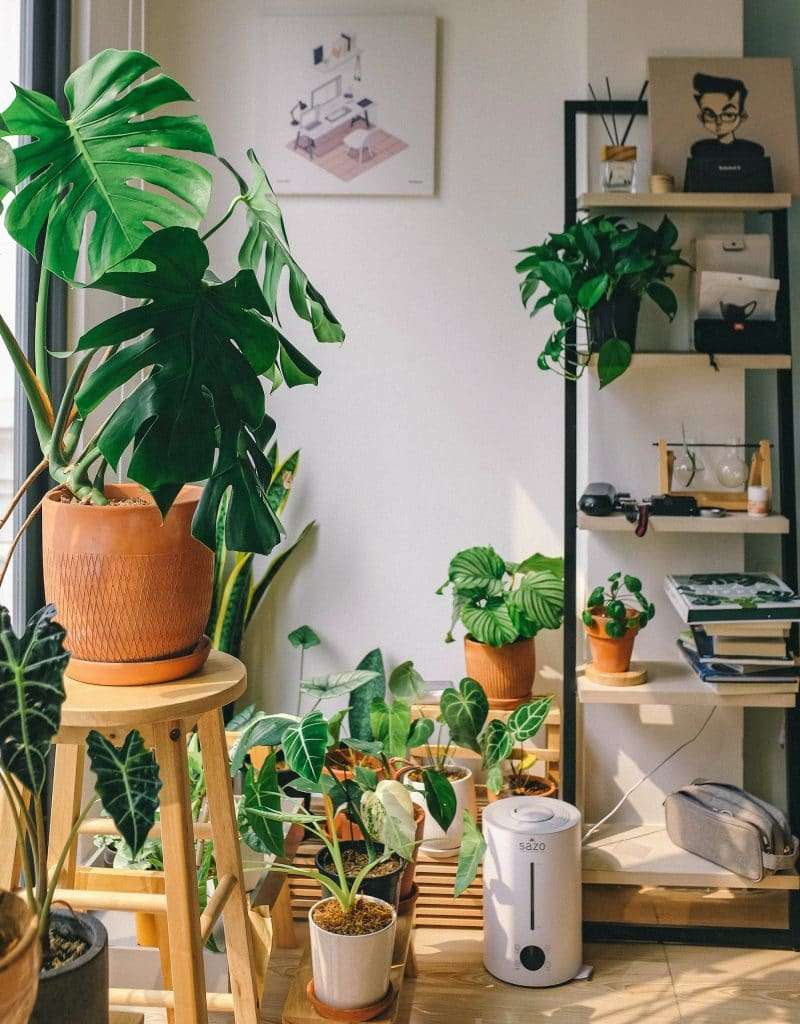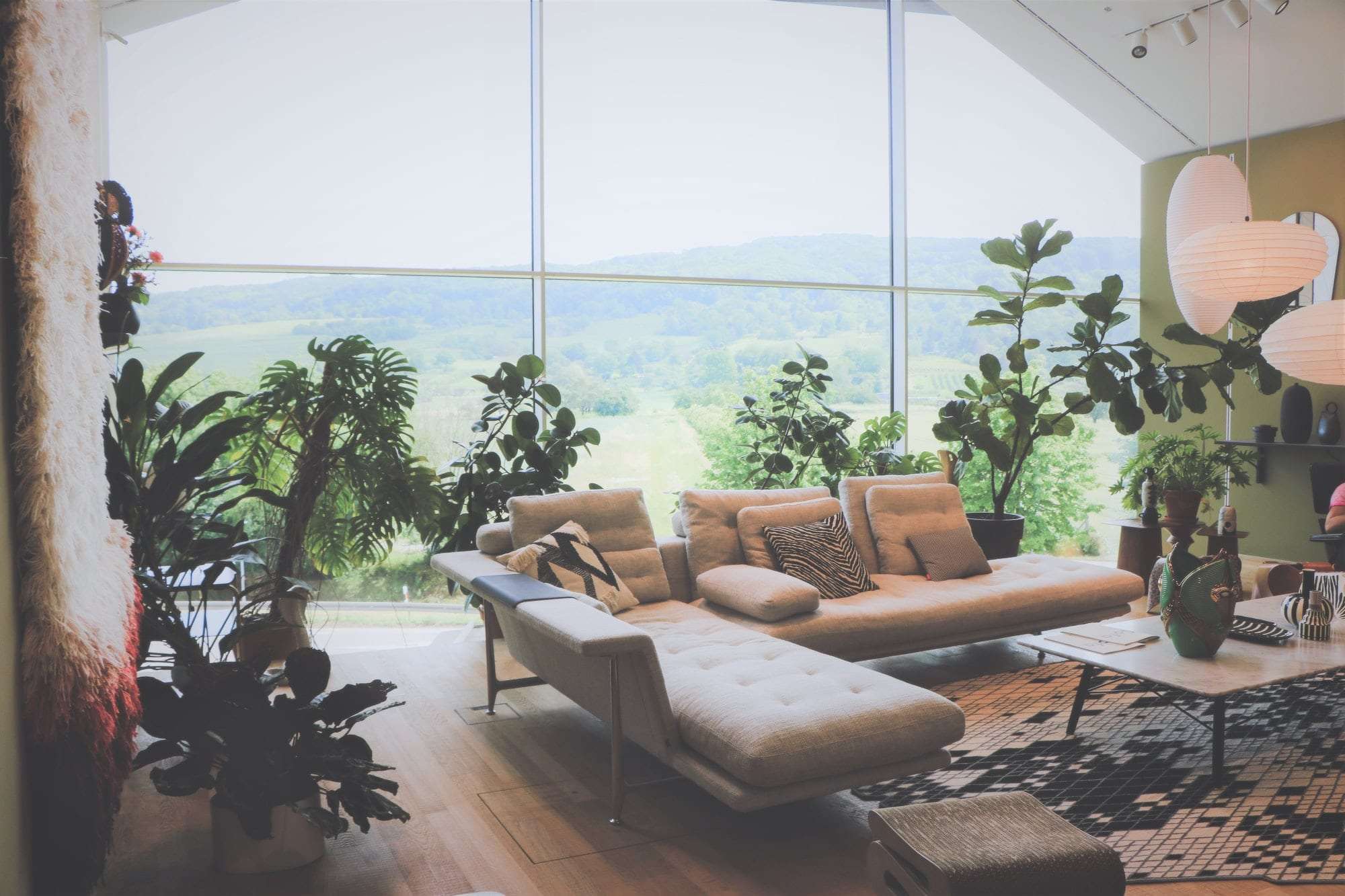Bringing colorful and sustainable décor elements into your home can be easier than you might think. According to one expert, houseplants are all you need.
Houseplants are colorful. They clean the air. They produce oxygen. They tie a room together. And according to Justin Hancock, a horticulturist at Costa Farms, the largest house plant grower in the U.S., they’re excellent in the pursuit of sustainable home décor.
“Houseplants have a lower sustainability footprint than a lot of other home décor items,” Hancock told Ethos via email. “Because they’re plants, they’re absorbing carbon dioxide from the air. While a houseplant may not sequester as much carbon as, say, an oak tree in your front yard, it’s certainly doing more for the environment than a lamp or throw pillow.”
Hancock says it helps to frame houseplants similar to the manufacturing process for common household goods. Houseplants, he says, require fewer inputs. They live off of sunlight, they require minimal water. There’s not much else to it.
“Being living things, houseplants also don’t need to take up space in a landfill if they stop living—they can be composted and increase the health and quality of your soil,” he adds.
Finding the right houseplants
While the benefits of houseplants are many, so too are the challenges in keeping them alive. Hancock has some tips.

“Different plants thrive in, or at least tolerate, different conditions,” he says. “A high-light, low-water plant like a cactus will only last so long in a dark corner,” he says. So it’s important to match a plant to the conditions in your space — available light, average humidity levels, all make that plant better able to withstand stressors.
Hancock says the very best practice is to match up the needs a plant has with what your space has to offer, as well as your watering style. This takes some research, but the payoff is worth it.
If you’re not sure about your conditions, aren’t confident in your plant care skills, or are a beginner, Hanock suggests starting with a plant that has a wide range of tolerances like Aglaonema (commonly called Chinese Evergreen), Snake Plant (also called Sansevieria), or ZZ Plant (botanically known as Zamioculcas zamiifolia). “These three plants are among the most forgiving of a wide range of indoor environments,” he says.
Caring for colorful houseplants
When you’re repotting a plant, Hancock says to go up one size at a time. “So if you have a plant in a 4-inch-wide container, it’s best to bump it up to a pot that’s about 6 inches in diameter.”
There are risks when jumping up to a container that’s too large. “It can lead to overwatering or root rot problems,” he says.
“Potting mix acts like a sponge, keeping moisture available for plant roots. Using this analogy, the bigger the sponge, the longer it takes to dry out. But if the potting mix stays too wet for too long, roots can suffocate and die.”

Feeding and fertilizing plants is often another big point of confusion. There’s a wide category of fertilizers ranging from synthetic to animal-based fish emulsions to kelp. Hancock says you don’t need much, and fertilizing just once or twice a year may be enough.
“If you’re looking for the most sustainable choice, check for a product that’s made locally so it’s not being shipped in from across the country,” he says.
Coir and peat
Coir and peat moss are two of the most common growing media used for houseplants. “They’re fantastic for growing indoor plants because they have a good mix of water-holding capacity and aeration, so there’s plenty of moisture for plant roots to pull out, but enough air that the roots don’t suffocate,” Hancock says.
Coir is made from the inner husk of a coconut. I”t’s a byproduct of the coconut industry, so a lot of people give it high sustainability marks,” Hancock says. “Coconuts are produced annually from coconut palms, which can be productive for more than 50 years. As they live and grow coconut palms continue to sequester carbon from the atmosphere.”
But he cautions that coir has a downside as most of it is produced in India, Sri Lanka, and surrounding areas, so it does need to be shipped to North America. “Though there are some closer plantations,” he says. “For example, Costa Farms buys coir for its farms in the Dominican Republic from a coconut plantation in the Dominican Republic.”

Peat is another organic medium, coming from bogs. “It can take centuries for a peat bog to replenish and there are concerns about the impact to wildlife and ecology of the bog when it’s harvested,” says Hancock.
“That said, many peat bogs are carefully managed (like Christmas tree farms) where a percentage is harvested each year, keeping the bogs active.”
Soil
Hancock says not to worry too much about changing soil before you change pots. “In most cases, your plant will outgrow its pot before it needs new soil,” he says. “As a general rule, it’s best to change out the soil when it starts to degrade. As the peat or coir decompose, they start to compact, leaving less air space for roots. This increases the likelihood of root suffocation. Since roots absorb moisture for the plant and leaves release moisture through the respiration process, suffocated roots mean the plant starts to die back.”
Even if you’re taking all of these factors into consideration, houseplants can often fail to survive. The culprit, according to Hancock is “too much love.”
“They get overwatered,” he says. It’s difficult to speak in absolutes since there are so many different types of plants grown indoors, but he says most houseplant deaths are the result of overwatering — drowing the roots, essentially. “Without enough air, the roots can’t survive.”
Related on Ethos:


